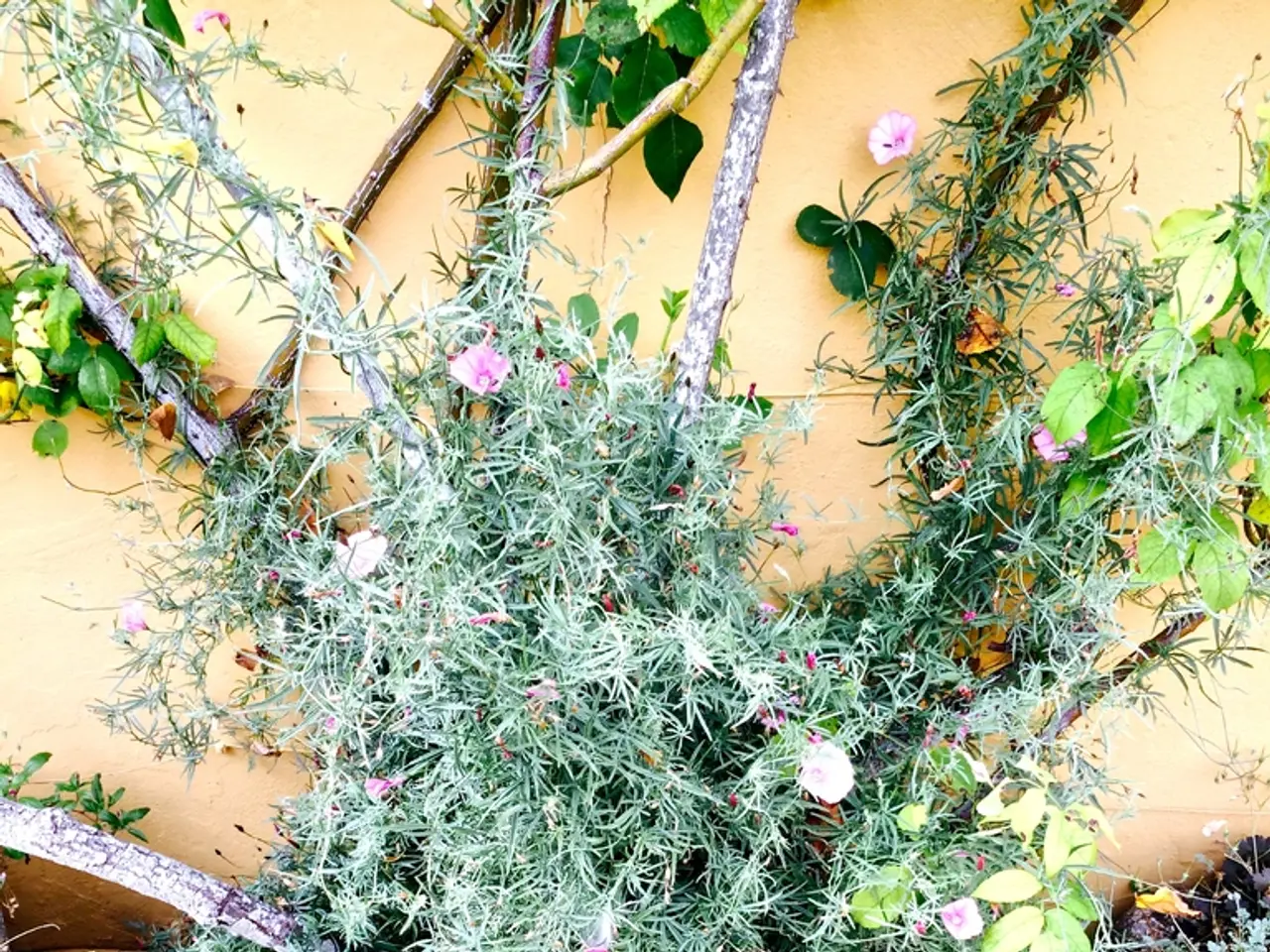Blooming Beauties in November: Discover what's flourishing and creating a vibrant spectacle in your outdoor sanctuary this month
November is an excellent time to cultivate a garden that offers structure, wildlife support, and vibrant colour throughout the year. Here are some plants to consider for your November garden.
For Structure and Colour
Camellia
This evergreen shrub provides year-round structure with its glossy leaves and blooms from late winter to early summer, offering rose-like flowers in various colours. Camellias prefer morning sun and afternoon shade, and thrive in moist, acidic soil.
Forsythia
Forsythia brings electric yellow cascades on bare branches, creating a striking early spring display. As the foliage grows in, it acts as a privacy screen.
Spirea
Spirea produces flower clusters in pink, red, or white, and offers colourful foliage in gold, bronze, or burgundy that lasts beyond bloom time. This versatile plant fits many garden styles and can be used as hedges or in containers.
Hydrangea
Known for large flower heads that can change colour depending on soil pH, hydrangeas bloom from summer into fall, attracting butterflies.
For Wildlife Support & Early Nectar
Eryngiums (Sea Holly)
Bee-friendly perennials, eryngiums require cold stratification over winter and provide nectar in spring.
Allium sphaerocephalon
A pollinator favourite, allium sphaerocephalon has striking purple flower heads and can be planted as bulbs or started from seed in November.
Bugle (Ajuga reptans)
Native evergreen groundcover, bugle provides colour and shelter for insects. It thrives in partial shade or sun.
Sweet Peas
Autumn sowing results in earlier flowers, providing nectar to pollinators in spring.
Bulbs and Perennials to Plant in November for Spring Colour
Daffodils and Tulips
Classic spring bulbs, daffodils and tulips provide early bright colour.
Hellebores
Winter and early-spring blooming perennials, hellebores offer attractive foliage and flowers.
Bare-root Roses
Give structural form and blooms later in the growing season with proper planting.
Pansies
Offer winter and early spring colour with flowers that attract early pollinators.
Together, these plants provide a balanced combination of year-round structure, early season colour, and wildlife support. This selection suits cool climates such as the UK but can be adapted with local equivalents elsewhere. For vegetable gardeners, complementary winter crops like kale, Swiss chard, and carrots should be planted separately for harvest rather than ornamental structure or wildlife.
In addition, there are several other plants worth considering for your November garden:
- Galactites tomentosa: A Mediterranean and southwestern European thistle, it has stunning crisp, white-and-green variegated foliage in autumn and winter. It adores free-draining, sun-rich locations in the garden.
- Saxifraga 'Shiranami': This plant has abundant, pure-white, double flowers that look like stylised sea foam.
- Coronilla valentina subsp. glauca 'Citrina': It has soft-yellow flowers that are sweetly citrus scented and appear on stems that scramble and ramble over the ground in a charmingly haphazard way.
- Astilbe 'Beauty of Ernst': This plant has a wide colour spectrum of leaves that range from green and purple to gold, orange and deep red.
- Plectranthus argentatus: It has blue spikes that stand out beautifully against the silver-grey leaves.
- Prunus incisa 'Kojo-no-mai': A compact cherry tree with flame-like autumn foliage and great winter structure, it grows to a height of 1.5-2.5m and originates from Japan.
- Nicandra physalodes 'Black Pod': This plant has bell-shaped flowers that are pale blue to violet with some white, and black-spotted seedpods that are long lasting when dried.
- Colletia paradoxa: It has small, white flowers with a sweet, almost honey and almond-like scent in late autumn and winter. It grows to a height of 2.5-4m and originates from Uruguay and southern Brazil.
- Nepeta kubanica: This plant has large, purple-blue flowers and purple spiked seedpods that create a strong architectural effect in late autumn.
- Miscanthus nepalensis: A delicately graceful grass species, it achieves a height of around 1.5m. It has plumes that sway in the breeze and display an ease of movement and transparency in November.
- Deyeuxia effusiflora: This plant has loose and airy plumes that attain a soft, purple glow.
- Acaena microphylla 'Kupferteppich': A charming plant with copper-colored foliage, it grows to a height of 10-20cm and thrives in well-drained soil and full sun.
- Abelia x grandiflora: This plant has fragrant, white flowers and glossy, evergreen foliage. It is a hybrid species that originates from China and thrives in full sun or partial shade.
- Sorbus pseudohupehensis 'Pink Pagoda': This tree has beautiful, feathered, blue-green leaves that turn a glorious rich red in autumn.
- Allium thunbergii 'Ozawa': This plant flowers late, producing clusters of bright-purple to purple-pink flowers from September to November.
- Acer griseum: This tree has a wonderful translucent quality when its papery, peeling bark is backlit in late autumn and winter. It is a slow-growing tree that originates from central China.
- Clematis 'Polish Spirit': This plant has medium-sized, dark-violet flowers and a rich and long flowering period.
- Rosa 'Geranium': This rose has large, delicately fragrant, bright-red blooms in summer and attention-grabbing red hips in September. It grows to a height of 1.5-2m.
- Fuchsia 'Blacky': This plant has large flowers in a dark, black purple and purplish red.
- Euonymus hamiltonianus subsp. sieboldianus 'Coral Charm': This deciduous tree-like euonymus has clusters of coral-pink fruits with orange-red seeds that can persist well into winter.
- Enhance your home-and-garden lifestyle by planting camellias, forsythia, spirea, hydrangeas, and eryngiums (Sea Holly) in November for a vibrant landscape throughout the year. These plants offer structure, color, and wildlife support.
- Allium sphaerocephalon, bugle (Ajuga reptans), sweet peas, and galactites tomentosa are excellent choices for early nectar sources, attracting pollinators.
- To bring color in spring, consider planting daffodils, tulips, hellebores, and pansies as bulbs or perennials. Additionally, bare-root roses can provide structure and blooms later in the season.




